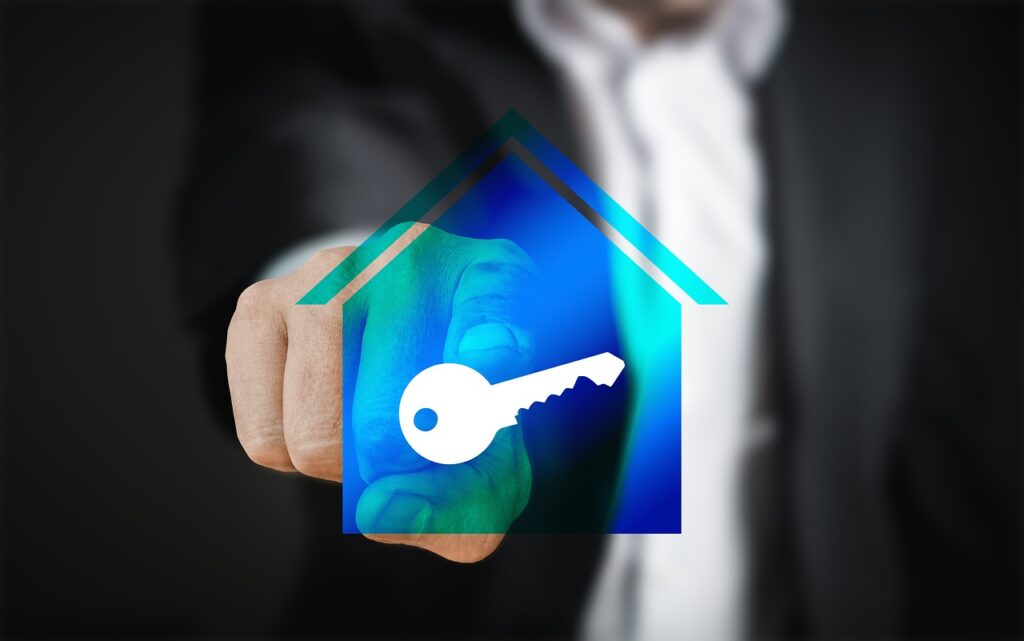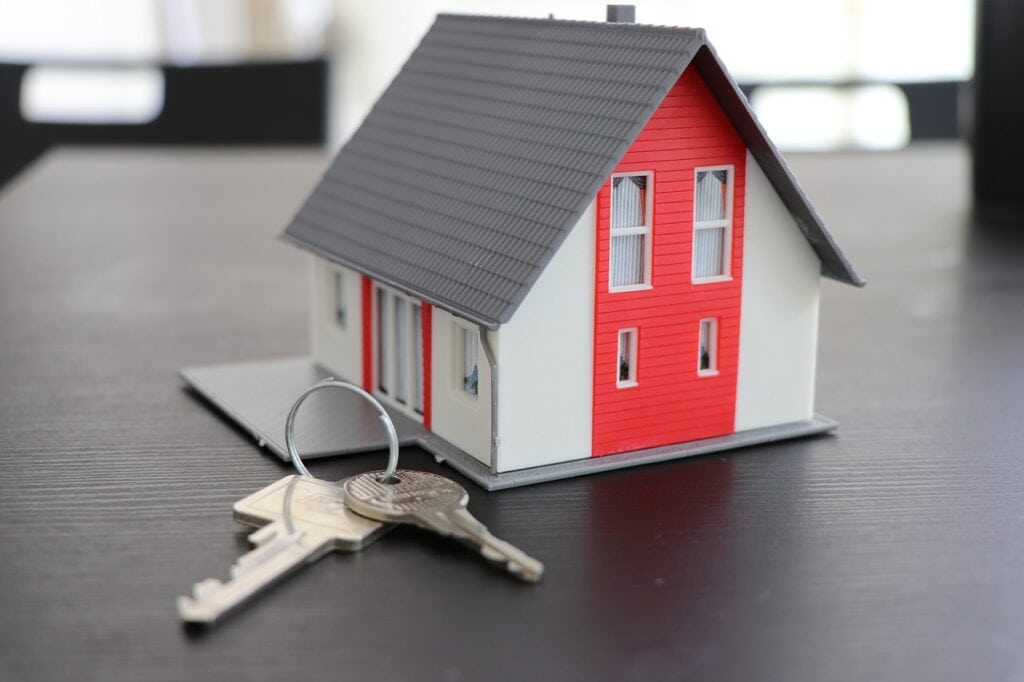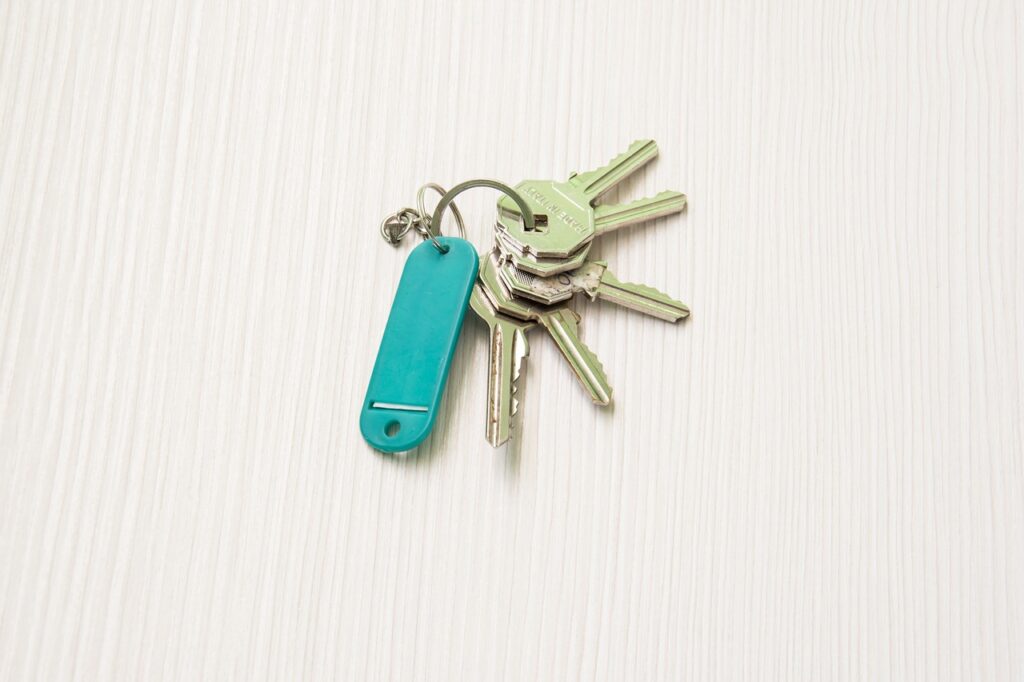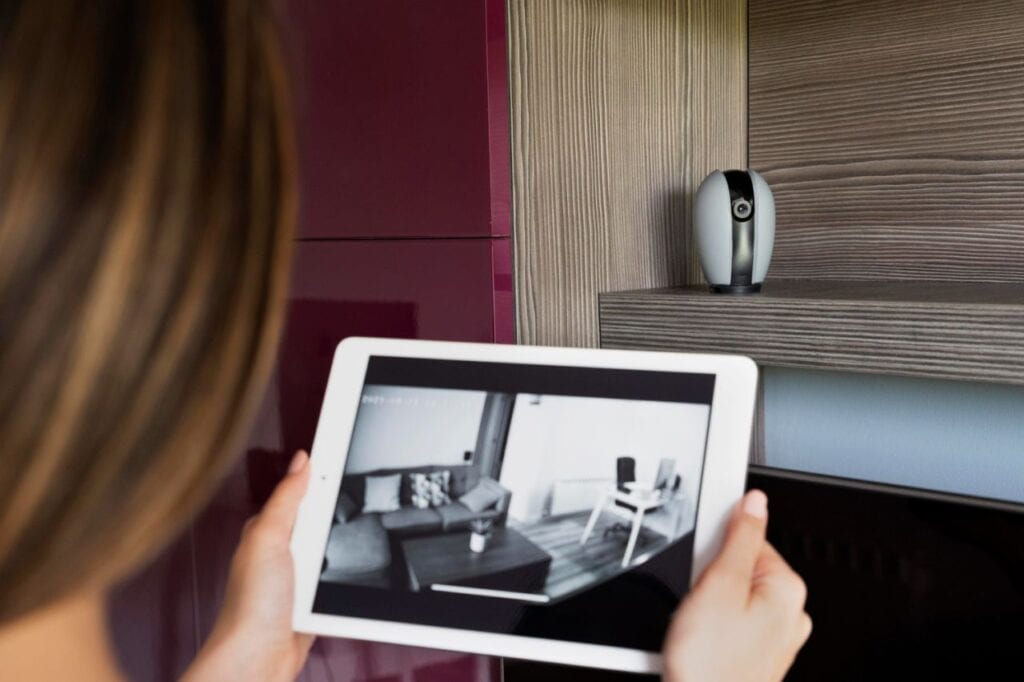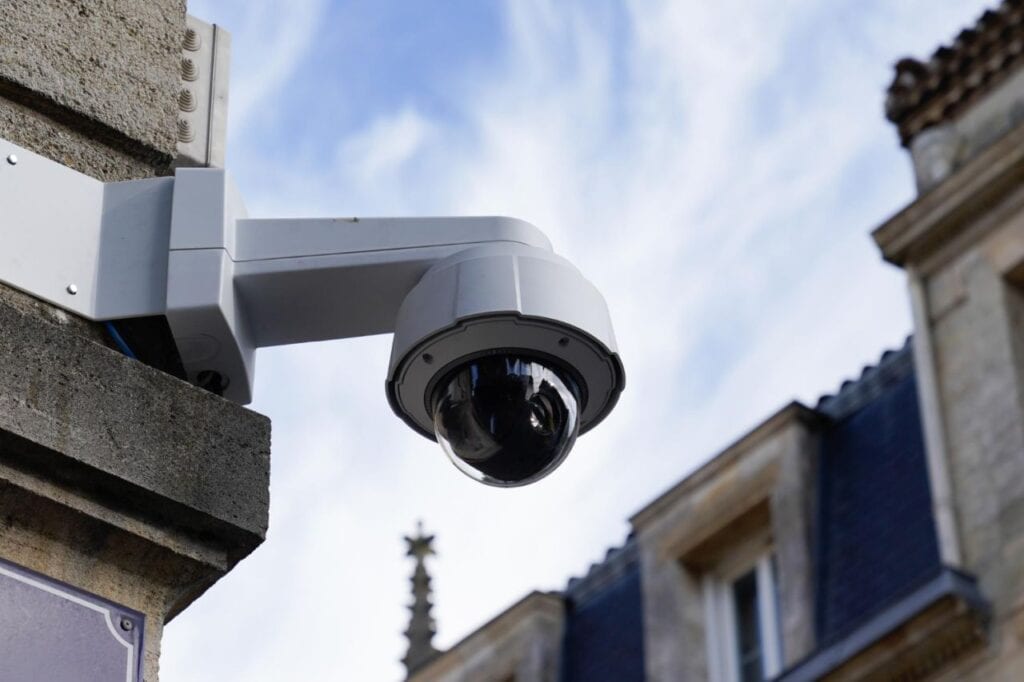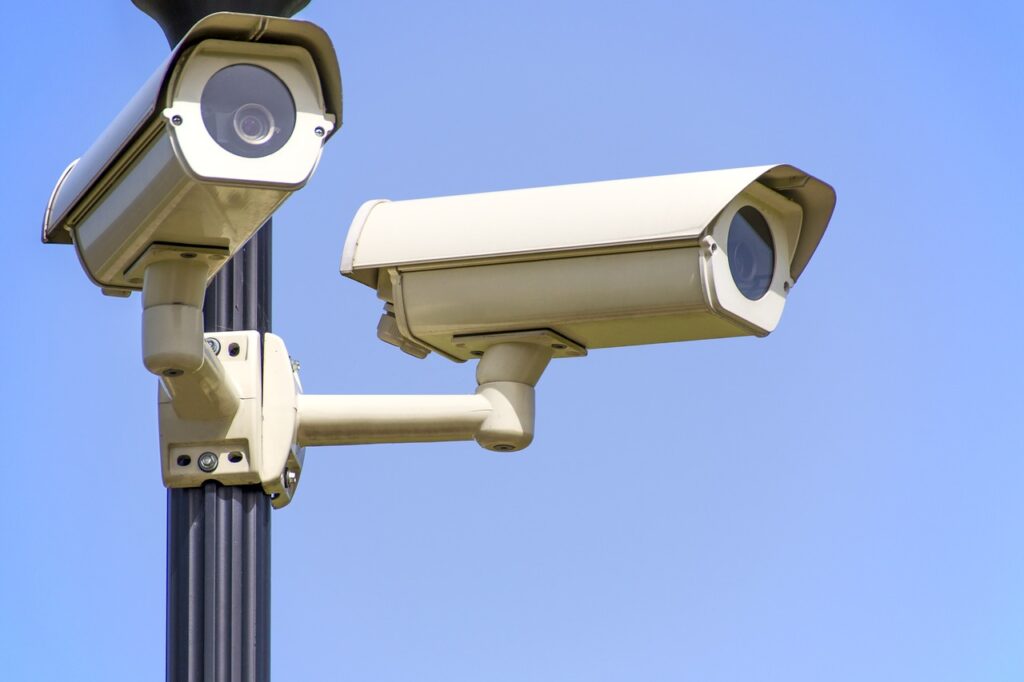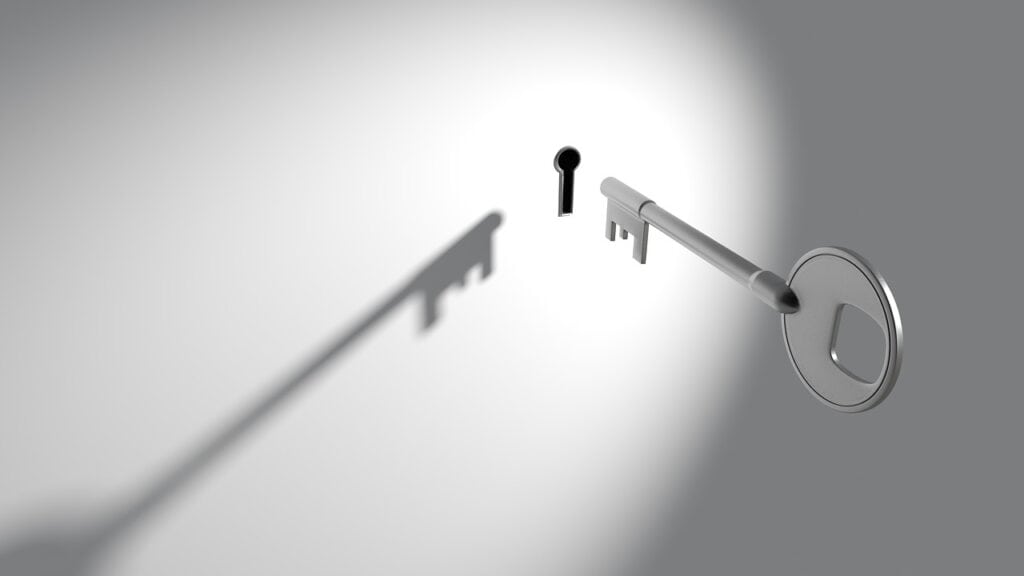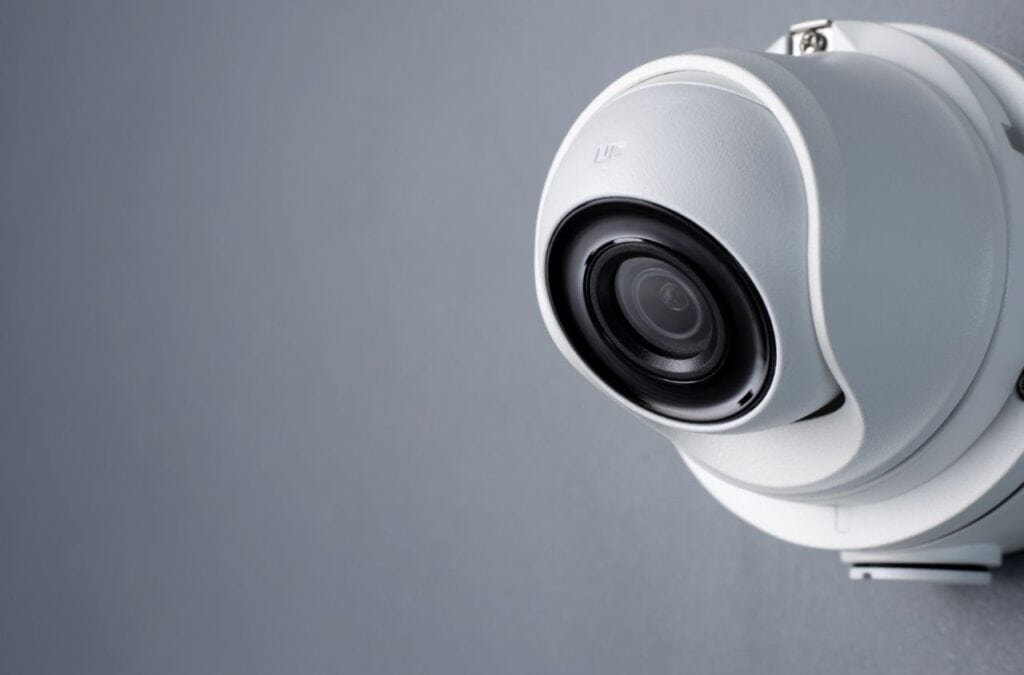When it comes to protecting one's home, a homeowner can pick from a number of different options. It's important to give some thought to your needs before purchasing an alarm system, as the market is crowded with many different kinds of systems. In order to help you choose the home security alarm system that will serve your needs best, this article will provide an overview of the different systems currently on the market.
If you're thinking about investing in home security services, this article will explain the differences between five different alarm systems. Thanks to the combined efforts of these safeguards, your entire home will be safe from criminals and accidents. The following types of security sensors can help you keep your loved ones safe in a variety of different ways.
Frequently Asked Questions About Alarm System
But even with those updates, ADT probably isn't worth its steep price tag. Despite the system performing adequately, its poor user experience, clunky design and high prices make it one of the least enticing professional home security systems on the market.
The best Z-Wave compatible security systems are the IQ Panel 2 Plus and the 2GIG GC3. These systems are the best for Z-Wave smart home functionality because they have Z-Wave Plus controllers. This allows them to achieve all the features available with Z-Wave Plus.
The purpose of structural security is to prevent or slow down incidents around your building. An intruder wants to enter and leave your building with the least resistance. With structural security solutions, you can make your building unattractive as a target for burglars.
Facility security is the protection and measures taken toward protecting a building or other physical location. Among the facility's components, security is access control, or the protection against entry by unauthorised persons, fire detection and suppression, and emergency-response planning.
An operating system has three main functions:
- Manage the computer's resources, such as the central processing unit, memory, disk drives, and printers.
- Establish a user interface.
- Execute and provide services for applications software.
Sensors That Can Detect Shattered Glass
When glass breaks, it creates a wide range of frequencies. Both ultrasonic and infrasonic waves fall into this category, with the former being audible to humans while the latter is not. These sensors are placed next to the glass, and any time a pane is broken, an alarm goes off.
Glass breakage can be caused by an intruder trying to enter your home or by a flying object striking a glass or window door, and a window alarm sensor can alert you to either scenario. In comparison to most traditional security systems, which can only detect a break-in if a window or door has been left unlocked, this gadget is a huge improvement.
How Does A Glass Break Detector Function?
You can use the microphones that are built-in on this gadget to detect the sound of breaking glass anywhere in your house. To avoid false alarms, the vast majority of glass sensors employ a method called double sound sensor. This requires listening for both the dull thud of an object striking the window and the sharp clink of glass breaking. If the detector picks up on a specific frequency of glass shattering, it will sound an alarm and send a signal to a central monitoring station. The dispatch team will get in touch with you to brief you on the situation and offer their assistance in responding to it effectively.
Taking Advantage Of A Glass Break Detector
If you have this type of alarm sensor installed, it may alert you if someone is attempting to break into your home. No need to install a separate detector for each window; a single detector's range is sufficient for monitoring multiple panes of glass within the same room. You probably don't need a glass break detector in every room, but it's a good idea to put them in the rooms with large windows or sliding glass doors, as these are the entry points most burglars will use to gain access to your home.
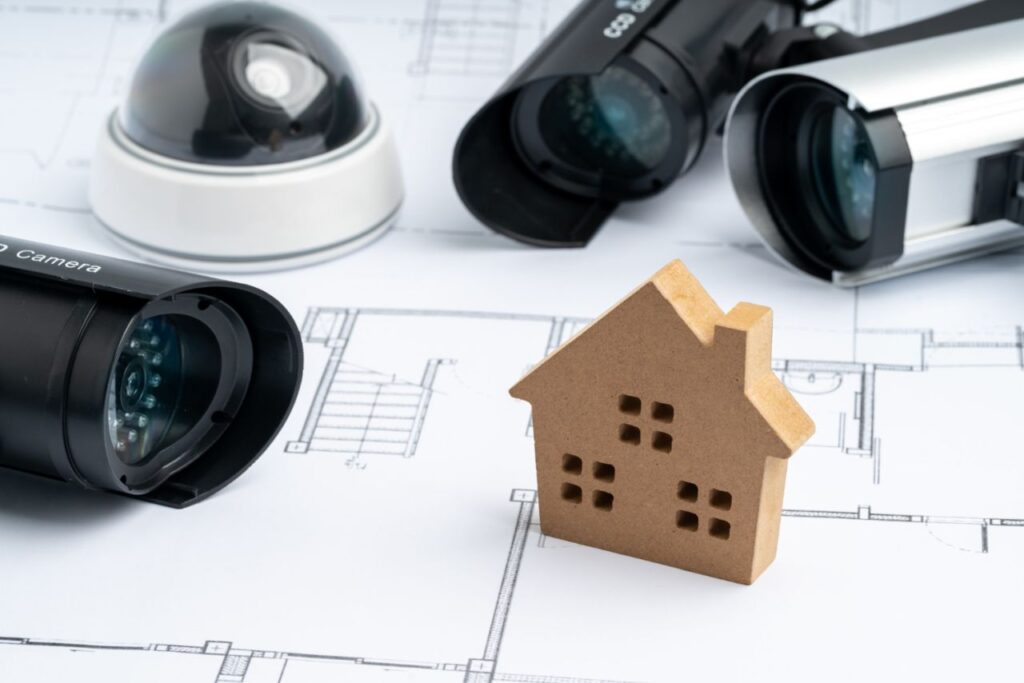
The Glass Break Detector: Setup And Upkeep Instructions
These sensors are part of the burglar alarm system, and while you can instal them yourself, If you hire an expert from a reliable alarm company, they will understand exactly where to instal them to provide the greatest possible level of safety for your home. In order to pick up the sound of shattering glass, these detectors must be placed in a strategic location.
After having a professional alarm technician instal glass break detectors throughout your home, the only maintenance you'll need to perform is to swap out the batteries every few years. The device will alert you when the batteries are low, so you won't have to try to recall the last time you changed them. Contrarily, if the detectors are malfunctioning, you should get in touch with the security firm that set them up so that they can check them out and fix them.
Sensors For The Natural World
More likely than uninvited guests are things like sudden temperature swings, leaks and floors in your home. Sensors monitor the environment to detect any potentially harmful changes. If it detects an abrupt change in the environment, such as a change in temperature or water level, the device will sound an alarm and contact our despatch team. After that, someone from our despatch department will get in touch with you. It is recommended to have a professional instal environmental sensors in the following high-risk areas for water damage, such as leaks and floods:
- Basement
- Bathrooms
- Location of the laundry room
- Kitchen
Consider the various environmental sensors available and what data they could provide if installed in your home.
Alarms For High And Low Temperatures
The temperature in your home can be monitored by a security sensor, which will notify you of any abnormal changes. For instance, if the temperature of the air in your home abruptly changes, it could be a sign that there is a problem with your heating, ventilation, and air conditioning (HVAC) system. If the despatch centre gets the message, they'll get in touch with you as soon as possible so you can fix your HVAC system and prevent costly damage to your home.
If the temperature drops below freezing, there is a chance that your pipes will freeze and burst, causing water damage to your home and potentially ruining your electronics and appliances. In a conducive environment, mould can proliferate and spread rapidly throughout a home. Having a high and low temperature alarm in your home will help you keep your family and belongings at a comfortable temperature. The indoor climate of your home can be monitored with this. See our list of available home & business CCTV Melbourne for your security solutions. The following places are good candidates for having the technician instal a high or low temperature alarm:
- To see the current temperature inside your fridge without opening the door.
- Nearby plumbing appliances or fixtures to lessen the possibility of pipe bursts.
- In cellars, to forestall the spread of mildew and mould.
Sensors For Heavy Rains
A flood sensor is installed to detect water leaks and alert the homeowner. Water damage is the second most common cause of homeowners to file insurance claims. Having a system in place to track the frequency with which your home floods could prevent you from filing insurance claims like this.
If you have flooding in your home because of a burst pipe or bad weather, the excess moisture can ruin your electronics and promote the growth of mould and mildew. Water damage can be prevented and costly repairs avoided if you can locate the leak and fix the problem. The security alarm technician may recommend installing the flood detector in one of the following places:
- Proximity to plumbing and water lines
- In a basement or underground passage
- Close to the location of the hot water tank
- Within easy reach of the washer
Indicators Of Motion
When you can't be at home to keep an eye on things, motion detectors are a must-have for safety. To keep your loved ones and possessions safe from harm or theft, consider how these devices work in tandem with the other sensors in your security system.
To What End Does A Motion Detector Serve?
Movement in your home can be detected by these gadgets thanks to infrared (IR) or microwave radar technology. Some models can even censored by the temperature changes to tell if an intruder has broken into your home. False alarms can be avoided by adjusting the device's sensitivity and distance from the target.
If the sensor picks up on suspicious activity, it will trigger an alarm and send a signal to your home's security system. The monitoring centre can alert the proper authorities even if you're not there to receive the alert.
Advantages Of Using A Motion Detector
The motion detector is useful for home security because it helps you identify when an intruder has entered your home. This detector can help keep your home safe from potential intruders while you're away, as well as assist you in keeping an eye on areas of your property that no one should be wandering.
As important as it is to keep an eye on younger children who may wander into dangerous areas of the house, it is equally important to keep an eye on older children, especially those who may have been out past their bedtime. Fortunately, there are motion detectors available that are less likely to be triggered by pets.
Where Should I Put My Motion Sensor?
If your motion detector is installed properly by a qualified technician, it will function as intended. The ideal placement of the device will be determined by the manufacturer's specifications. The technician should typically look for a spot in the room or corridor where the detector can pick up motion without false alarms. Places like the edge of the room or the passageway are examples.
Avoid placing the device near any windows or sliding glass doors, as motion outside could trigger the device, giving the false impression that someone is home. The infrared motion sensor is easily disrupted by changes in temperature, so keep them away from vents and ducts.
Indicators For Doors And Windows
The majority of home invasions occur through the front door or a window, so keeping an eye on these entry points is crucial for safeguarding your family and possessions. With the help of the other sensors in your home alarm system, any time a window or door is opened or closed, an alert is sent to the monitoring centre.
How Do Door And Window Sensors Work For Safety?
These detectors usually consist of a sensor and a magnet. A magnet is installed on the inside of the opening, and the sensor is fastened to the exterior frame of the window or door. The magnet will separate from the sensor when a window or door is opened. Inside sensors are reed switches that, upon detecting a breach in continuity, sound an alarm and send a signal to a central monitoring station. In case the door is opened, you can set the system to immediately dial the police or other emergency services.
Perks Of Making Door And Window Connections
With the help of these gadgets and other security measures, such as breaking glass censor, window and door contacts, and alarm systems, you can lessen the likelihood of a break-in. Moreover, these sensors can monitor your property even when you're not there to do so, allowing you to relax and enjoy yourself without any concerns. The sensors can be set to immediately notify the central monitoring station and the local authorities whenever a window or door is opened.
Where Should Door And Window Contacts Be Placed?
Professional installation of these sensors is possible on all of your doors and windows, but is especially important for the easier-to-break-into ones on the ground floor. Your home security system package, in most cases, will include a set number of sensors. In order to cover all of the windows and doors you want to keep secure, it's a good idea to find out from the alarm company what kinds of window alarm sensors they have on hand.
Is There A Way To Preserve Window And Door Contacts?
The alarm panel will usually show an error message if any of the window or door contacts aren't working properly, but it's still a good idea to check on them once a week just in case. The adhesive on the sensors could weaken over time, particularly if you live in a humid climate. If the sensor's bond weakens, your system may begin sending false alarms. Thus, to ensure the system works properly, it is also necessary to check the alarm panel for any error messages in addition to the sensors.
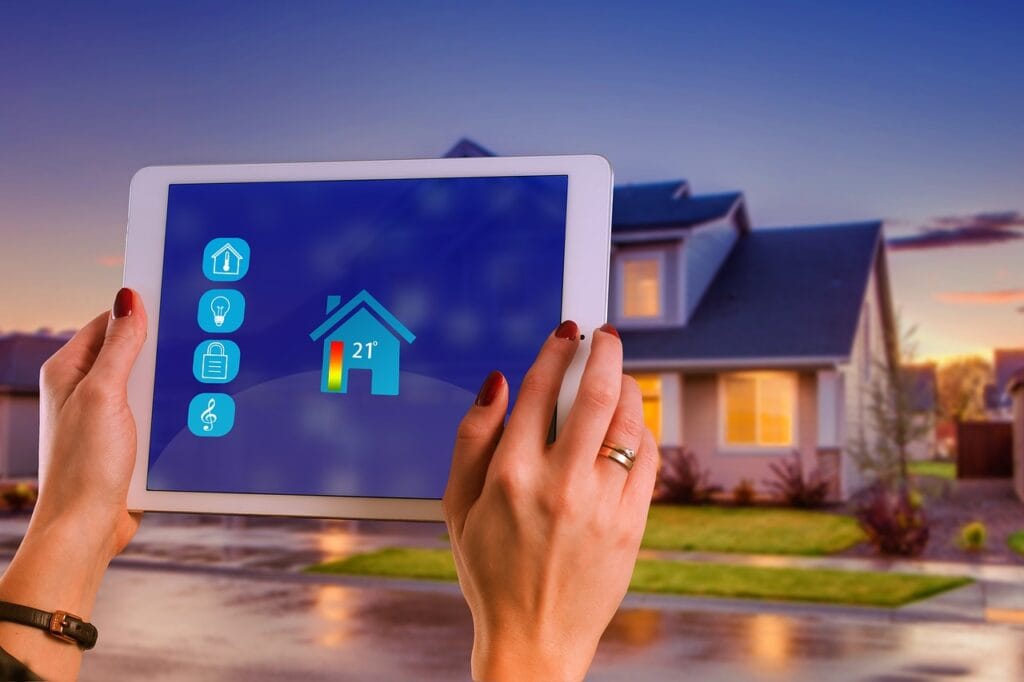
Alarms For Both Heat And Smoke
The potential for a fire in your home can be monitored by installing heat and smoke detectors, which are a type of home security sensor. Detectors for carbon monoxide, smoke and heat can alert you to potentially dangerous levels of these substances even when you're not around. Think about what our fire alarm monitoring system can pick up on to guarantee the safety of your building.
Heat
Similar to low/high temperature sensors, heat detectors will sound an alarm if they detect an abnormal rise in temperature in a predetermined area of the home. The ignition of a fire is the most likely explanation for a sudden rise in temperature inside a closed space.
The detector will sound an alarm, alerting those nearby to evacuate, and will also notify the central command centre. Because smoke detectors have a higher chance of going off accidentally because of false positives, you may want to instal heat detectors in rooms like the kitchen, the utility closet, and the laundry room.
Smoke
It's possible that a house fire could get out of control and destroy your home before you even notice that it started. To safeguard your loved ones and yourself, have trained experts set up smoke alarms in your home in a well-thought-out layout.
Our fire alarm monitoring services can alert you and the fire department even when you're not there, thanks to the connection between your home's heat and smoke detectors. Having this information at your disposal will speed up the process of making the necessary plans.
Carbon Monoxide
Carbon monoxide is a toxic gas that can slowly seep into your home and degrade the air quality. It has no flavour, smell, or colour, making it difficult to detect (IAQ). Your gas stove or furnace could be releasing a potentially harmful gas into the air without your knowledge. If this gas comes in contact with an existing flame, it could start a fire. Carbon monoxide intoxication causes drowsiness, disorientation, nausea, and sometimes even headaches.
Electromagnetic Radiation
Photoelectric beams use infrared light to pinpoint the location of intruders. Commonly, these infrared light sources will be arranged in rows of two or more. There is a home alarm that will go off if a beam is ever broken in any way.
Induction Motors And Magnetic Switches
Magnetic switches are frequently used to protect entrances such as doors and windows. They are widely used because of the ease with which they can be used, the longevity of their service, and the low cost involved. Homeowners can easily instal them on their own because they only require two parts (a switch and a magnet). The switch includes a spring that allows it to close and start an electrical circuit when combined with a magnet. An alarm will sound if a window or door is opened, as this will break the circuit and trigger the device.
Radio Wave Detectors
Microwave detectors function similarly to ultrasonic detectors. However, instead of using sound waves, they use radio waves with a high frequency. Microwave detectors provide far more coverage than ultrasonic detectors do because radio waves can travel through obstacles like walls.
Devices That Detect Ultrasonic Waves
Ultrasonic detectors use high-frequency sound waves to detect motion within a specified region. Human ears can't pick up their transmissions because they're in the inaudible 25 kHz to 75 kHz range. The walls, ceiling, and furnishings of a properly shielded room serve as reflectors for these frequencies.
Whenever the stabilised frequency undergoes a significant change, the alarm will also sound. In addition, the sensors in question will be unable to distinguish between intruders and regular people passing through the protected space because the frequency of the surrounding sound waves can be altered by any moving object.
Security System Activated By Electric Current
The most basic form of home security monitoring is the electric current system, which typically is installed during the building phase and only monitors entry points like doors and windows. If you're using one of these systems, you're probably aware that there's a low-voltage electrical current flowing between two locations. By sealing off any openings, you'll allow air to circulate more freely inside. But if you open them, the circuit will be disrupted and a beep will sound.
System Of Wire-Based Security Detection
Wired security systems use your home's already-installed landline telephone connection to communicate with a central monitoring facility. While the system does provide some level of monitoring, its effectiveness could be compromised if the actual wires on site were to be cut or destroyed. Therefore, you should have a backup cellular connection in case the primary one is disrupted by the weather or anything else.
Home Security System With Wireless Transmitters
A wireless home alarm system is a security system that does not rely on wires to transmit signals. This type of alarm system typically consists of a central control unit, a network of sensors interconnected via radio frequency transmitters, and an audible warning.
In response to an alarm trigger, your security system will activate after receiving a signal at the control panel. There are many benefits to installing a wireless system in your home, including the ability to control it from anywhere with a mobile device and seamless integration with other smart home features like lighting, security cameras, and climate control.
Unattended Home Security Alarm System
Unmonitored systems, also known as "local" alarms, rely on you or someone else in the immediate area to notify authorities in the event of a crisis. An unattended system will always sound an audible and visual alarm whenever a system trip occurs.
It's common knowledge that unmonitored systems save money over their monitored counterparts. Conversely, the lack of communication between your emergency and a central monitoring station, where it can be followed up with the despatch of first responders, means that unmonitored systems do not provide the same level of protection. Even if the alarm does send a notification to your phone, you may not be able to act on it if the cell reception is poor or if you are not close to your device.
Home Security System With Constant Monitoring
Knowing that a trustworthy expert is watching out for you is comforting. A monitored home alarm system is a great way to ensure that the police are notified immediately in the event of a break-in and can arrive on the scene as soon as possible. This is because, when an alarm is triggered, a monitored system will alert both the homeowner and the monitoring center's staff.
Manually opening a window or door, moving around the house (triggers motion sensors), hearing a loud noise (triggers acoustic sensors), or any other type of movement in the house could all trigger the alarm (which would set off motion sensors). Then, the monitoring station will investigate the signal and, if necessary, activate the emergency response team.
Conclusion
An intruder trying to enter your home or a flying object colliding with a glass or window door are both potential causes of glass breakage. There are sensors next to the glass that trigger an alarm if a pane is broken. The double sound sensor method is used by the vast majority of glass sensors. The burglar alarm system includes glass break detectors. Putting a glass break detector in every room is probably unnecessary, but it is highly recommended in any room that has large windows or sliding glass doors.
Typically, burglars will enter a home through these doors and windows. A security sensor can keep tabs on the temperature in your home and send you alerts if there are any sudden shifts. Your pipes could freeze and burst if the temperature drops below freezing. After fire, water damage is the No. 2 reason for homeowners to file insurance claims. Having motion detectors set up around your house is a great way to keep an eye on things even when you're not there.
Using infrared (IR) or microwave radar technology, they can spot any motion. In some models, temperature sensors can even be installed to detect if a burglar has broken into the home. In most cases, burglars will enter a home through the main door or a window. Installing sensors on your doors and windows can help protect your home from potential intruders. To keep an eye on things when you can't be there yourself, instal some sensors.
Carbon monoxide, smoke, and heat alarms can notify you of unsafe levels of these substances even when you're not there. When a dangerous spike in temperature is detected, a home's heat detector will sound an alarm. For this reason, smoke alarms are more prone to false alarms. Toxic carbon monoxide gas can seep into your home over time. Carbon monoxide intoxication causes drowsiness, disorientation, nausea, and sometimes even headaches; it has no flavour, smell, or colour, making it difficult to detect (IAQ).
A simple electric current system is the most fundamental form of home security monitoring. As a user of such a system, you may be aware that a low-voltage electrical current is being transmitted from one place to another. A home alarm system that does not use wires to send and receive signals is called a wireless system. You can rest easy knowing that the police will be notified instantly in the event of a break-in when you have a monitored home alarm system. A monitored system will notify the homeowner and the monitoring centre when an alarm is triggered. The signal will be checked out by the monitoring station, and the emergency crew will be dispatched.
Content Summary
- Considering your requirements is essential before settling on an alarm system, as there are numerous options available.
- This article will provide a brief summary of the various home security alarm systems available so that you can make an informed decision about which one is best for your family's needs.
- If you're looking into home security services, this article will break down the key distinctions between five common alarm options.
- The following security sensor types can be used to increase the safety of your home and family in a number of different ways.
- A window alarm sensor can notify you of any breakage in your glass, whether it was caused by an intruder trying to enter your home or by a flying object striking a glass or window door. This device has built-in microphones that can pick up the sound of shattering glass from anywhere in your home.
- Most glass sensors use a technique called double sound sensor to distinguish between actual breakage and false alarms. In the event of a break-in attempt, this type of alarm sensor could potentially sound an alarm.
- While a glass break detector isn't necessary in every room, it is recommended for those with large windows or sliding glass doors, as these are the primary entry points most burglars will use to gain access to your home.
- While you can instal these sensors yourself as part of your burglar alarm system, it's best to have a professional from a reputable alarm company do it so you can rest assured that they're in the best possible spots to protect your home.
- The placement of these detectors is crucial if they are to pick up the sound of breaking glass.
- You only need to change the batteries every few years after having a professional alarm technician instal glass break detectors in your home.
- A security sensor can keep tabs on the temperature in your home and send you alerts if there are any sudden shifts.
- A problem with your heating, ventilation, and air conditioning (HVAC) system may be indicated by, say, a sudden shift in the indoor air temperature.
- If you want to make sure your family and belongings are always a safe and comfortable temperature, installing a high and low temperature alarm is a must. You can use this to keep tabs on the temperature and humidity inside your house.
- Think about how these gadgets interact with the other sensors in your security system to keep your family and property secure.
- These devices use infrared (IR) or microwave radar technology to detect motion in your home. The sensor will alert your home security system with an alarm if it detects anything out of the ordinary.
- Thankfully, there are pet-resistant motion detectors on the market. Following the manufacturer's guidelines for optimal placement is essential.
- A place in the room or corridor where the detector can pick up motion without false alarms is typically what the technician looks for. Each time a window or door is opened or closed, the other sensors in your home alarm system will send a signal to the central monitoring station.
- The sensor is attached to the outer frame of the window or door, and a magnet is placed inside the opening. You can lessen the likelihood of a break-in with the help of these devices and other security measures like breaking glass censor, window and door contacts, and alarm systems.
- In the event that a window or door is opened, the sensors can send an instant alert to the central monitoring station and the local authorities. All of your doors and windows can benefit from having these sensors professionally installed, but those on the ground floor are particularly vulnerable because they are easier to breach.
- Typically, a certain number of sensors will be included in your home security system package. Find out from the alarm company what kinds of window alarm sensors they have on hand so that you can cover all of the windows and doors you want to keep secure.
- If the window or door contacts aren't functioning properly, the alarm panel should display an error message. However, it's still a good idea to check on them once a week, just in case.
- Thus, in addition to the sensors, checking the alarm panel for error messages is essential for system maintenance. Installing heat and smoke detectors, which are also known as "fire alarms," is one way to keep an eye on the potential for fire in your home.
- Remote carbon monoxide, smoke, and heat detectors can warn you of dangerous buildups of these hazards even if you're not there. Consider what our fire alarm monitoring system could detect to make your building completely safe.
- Installing smoke alarms in your home in a strategic layout is an important safety measure to take to protect your family and yourself. By linking your home's heat and smoke detectors to our monitoring service, we can send you and the fire department an alert even if you're not there.
- Electric current systems, which are typically installed during the construction phase and only monitor entry points like doors and windows, are the most basic form of home security monitoring.
- To communicate with the monitoring station, wired security systems utilise the home's existing landline telephone connection. A home alarm system that does not use wires to send and receive signals is called a wireless system.
- Once your security system receives a signal at the control panel, it will begin operating in response to an alarm trigger.
- The installation of a wireless system has many advantages, such as the user's ability to manage it remotely via a mobile device and its compatibility with other smart home features such as lighting, security cameras, and climate control.
- You can use the information in this article to pick the best video intercom system for your Melbourne home or business. In comparison to their monitored counterparts, unmonitored systems are known to have lower operating costs.
- In contrast, unmonitored systems do not offer the same level of security because of the lack of communication between your emergency and a central monitoring station, where it can be followed up with the despatch of first responders.
- If cell reception is poor or you are not near your phone when the alarm goes off, you may miss the message.
- With a monitored home alarm system, authorities will be alerted to a break-in immediately. This allows them to respond more quickly to the situation.
- This is because a monitored system will immediately notify the homeowner and the monitoring centre when an alarm is triggered. When an alarm is received, it is first looked into by the monitoring station, and then the emergency response team is dispatched if necessary.



